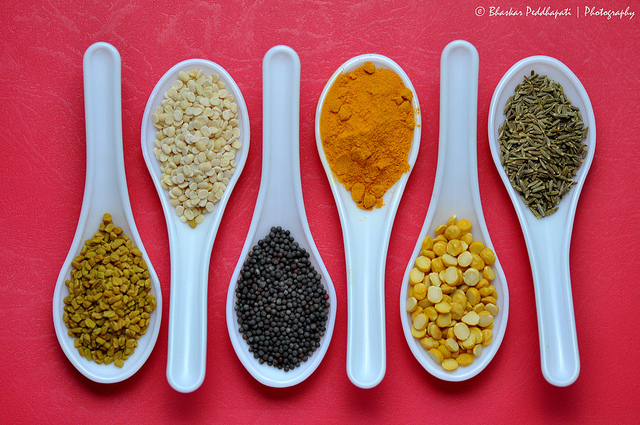I recently met an accomplished, Indian-born, western-trained Gastroenterologist at a graduation party I attended for my sister.
After sharing a little about how amazing it has been for me, as an American-born Indian, to not only discover, but have the opportunity to study Ayurveda, she was keenly interested to learn more.
“I work with the GI tract. We have so many complex procedures we take our patients through, but I so often find myself reminiscing back to my childhood days and all the simple, yet powerful solutions my grandmother used to possess to treat so many digestive ailments,” she confided.
Indeed, one of the most incredible discoveries for me from Ayurveda is how many tools it provides us to take our health into our own hands.
Unfortunately, while it is not given nearly as much attention in modern Ayurvedic circles, there is an incredible subbranch of Ayurveda dedicated to the art and science of Svasthavritta, which are detailed protocols for activating health and preventing disease.
One of the primary ways we heal ourselves through Ayurveda is via the food we consume.
Many people wrongly believe that Indian food is synonymous with Ayurvedic food. While both share some of the same ingredients, standard, modern Indian fare takes a lot longer to prepare, because it involves a lot more ingredients that are intended to stimulate one’s taste buds.
Ayurvedic meals have fewer ingredients, take much less time to prepare and usually taste a lot fresher, as they bring out the natural flavors of our foods. They are also designed to stimulate the taste buds, because Ayurveda teaches that digestion starts with the sight and smell of food.
The main intention of Ayurvedic cooking, however, is to stimulate—and sustain—amazing health.
My father recently wound up in the hospital under the care of the GI doctor I had met just a month before. He had a digestive emergency, yet the hospital menu made it possible for him to order a blueberry muffin the next morning, which was way too heavy for his already compromised digestive capacity to handle.
My family used to question my fascination with Ayurveda and feared that Ayurvedic food would not be as tasty as the kind of standard Indian fare they were used to. They had never tried Ayurvedic food. So, I was grateful for the opportunity to feed them Ayurvedic food while my father was in the hospital.
They were all quite shocked at how much they loved the simplicity, freshness, and prana (life force) of the Ayurvedic food!
Suddenly, the whole family kitchen was open for me to feed my folks for the remainder of my father’s recovery period, which was quite smooth thanks to the healing power of the few, simple ingredients used to prepare the post-hospital Ayurvedic meals.
Other Ayurveda practitioners and followers of this amazing science may have their own top five lists (thanks to the vast realm of the magical world of Ayurvedic spices). I would love to hear your top five lists, too.
The following are the five Ayurvedic herbs that have consistently amazed me, my loved ones and my clients the most, and that I truly recommend every kitchen have:
1. Cumin Seeds
I cannot think of a single savory Ayurvedic meal I have made without adding cumin seeds. This herb helps digest existing toxins in the body. Cumin seeds are such a great overall digestive aid, which help prevent all sorts of digestive disorders from cropping up to begin with. Cumin seeds are particularly beneficial for diarrhea and vomiting. Another benefit of cumin seeds is that it helps to purify breast milk for lactating mothers.
2. Turmeric
Every Indian household is stocked with turmeric, and there are some great reasons why. Turmeric serves as an appetizer for food and helps boost immunity, preventing many future health problems.
In addition to taking it orally, turmeric can be also applied externally. External application of turmeric benefits all kinds of itching, and greatly aids in the process of wound healing. In India, turmeric is such a household go-to item for topical application onto wounds, in fact, that Johnson & Johnson created a special turmeric-infused band-aid! I often recommend that clients drink warm milk with turmeric to help reduce swelling and otherwise aid in the healing of post-injury physical traumas.
When applied externally, turmeric has the additional benefit of enhancing your complexion, and is therefore often used to help beautify brides-to-be before their weddings in India.
3. Ajwain Seeds (Bishop’s Weed)
When you are in pain, reach out for ajwain seeds. This has become my personal mantra for the (now much rarer) instances that I experience menstrual cramps. It has an almost instantaneous benefit of soothing pain, is completely natural and has eliminated the need for the once-a-month addiction I had previously developed to taking painkillers during periods.
Suffering from bloating and gas-related pains? Ajwain is also the answer to this. Ajwain seeds can be consumed regularly, as part of daily meals. Doing so helps prevent gas and bloating in the first place, and is something I often recommend to clients who are having chronic gas-related problems. When you are suffering acutely from gas, bloating or any kind of stomach pain, you can boil ajwain seeds in water and then drink it once the water cools to a temperature you can comfortably consume.
Those with heat-related conditions should not have ajwain, however, as it is considered quite heating to the body. If you are in doubt about whether you may have heat issues, consult an Ayurveda practitioner.
4. Cardamom
An amazingly delicious herb—I always make sure I stock my spice box with cardamom. I never drink milk without adding a dash of cardamom to it; this spice is also what helps make Indian and other types of sweets taste so sweet, and benefits hyperacidity.
Cardamom can also help you fight bad breath—one of its actions in the body is cleansing the mouth.
The main action of cardamom in the body is reducing nausea. It can also be mixed with honey or lukewarm water to give to babies who are suffering from coughing accompanied with vomiting.
5. Rock Salt
Did you ever think that your standard salt could be a culprit in preventing you from losing needed weight? It can. The reason for this is that normal salt comes from the sea (which is why it is called “sea salt”), and therefore has a lot of water in it. We always recommend that clients who are interested in weight loss consume Himalayan rock salt instead. Since this rock salt comes from land, rather than the sea, it will not cause the same kind of water retention and weight gain that regular sea salt can create.
According to Ashtanga Hrdayam Sutrasthana, Chapter Six, Verse 144, rock salt has the additional benefits of kindling the digestive fire (with a balanced digestive fire being the key to good health in Ayurveda), and prevents burning, along with many skin conditions.
These five Ayurvedic spices have all contributed to making my own kitchen like a magical medical clinic, in which I truly feel empowered to create as much health as I please, with my own two hands.
Try adding one or all of these spices to your cooking and you, too, can begin to experience some of the magic, health and empowerment that the amazing science of Ayurveda blesses us with.
Reference:
1. Lochan, Kanjiv. Ashtanga Hrdayam Sutrasthana. New Delhi: Chaukhambha Publications, 2011.
Love elephant and want to go steady?
Sign up for our (curated) daily and weekly newsletters!
Author: Ananta Ripa Ajmera
Editor: Emily Bartran
Photo: pedhappati/Flickr











Read 6 comments and reply